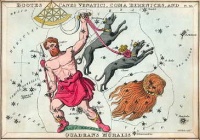Chapter 67: 646-657
Contents
Page 646
Sir William Johnson... Mohawk... Warrior Path... Six Nations
See pages 636 & 554.
Page 647
Socko Stoombray
Se acostumbre = one adjusts
Page 648
Pips
Something or someone excellent, of high quality. From WIKI In this context, "some of them are Babes, too".
Page 649
Encyclopedists
The Encyclopédistes were a group of 18th century writers in France who compiled the Encyclopédie edited by Denis Diderot and Jean le Rond d'Alembert. Like Pierre Bayle (1647-1706), who created the Dictionnaire Historique et Critique, the Encyclopédistes were part of the intellectual group known as the philosophes. They promoted the advancement of science and secular thought, and supported the tolerance, rationality and open-mindedness of the Enlightenment. From WIKI
Page 650
'tis no Dream, but a form of transport
Within the context of the novel, this seems to be a validation of the possibly flying Conveyance, Dixon's learning to fly with Emerson by Ley-lines, as well as various episodes of Astral Projection
Page 651
Aloft, these carry their wheels with them
Another section seeming to verify the flying Conveyances. See page 362. These also seem to foreshadow the airplanes of the future.
Ley-borne Life
See page 218.
drovers
A person who drives cattle or sheep over long distances. From WIKI
Laurel Hill
See page 468.
Bear... with her Arm extended... "upon a Line I could not break,- and wait, sleepless, starving..."
Jemmy is relaying the story of his Vision Quest: In many Native American groups, the vision quest is a turning point in life taken before puberty to find oneself and the intended spiritual and life direction. When an older child is ready, he or she will go on a personal, spiritual quest alone in the wilderness, often in conjunction with a period of fasting. This usually lasts for a number of days while the child is attuned to the spirit world. Usually, a Guardian animal will come in a vision or dream, and the child's life direction will appear at some point. The child returns to the tribe, and once the child has grown, will pursue that direction in life. After a vision quest, the child may apprentice an adult in the tribe of the shown direction (Medicine Man, boatmaker, etc). From WIKI
Great Bear
Ursa Major is a constellation visible throughout the year in most of the northern hemisphere. Its name means the Great Bear in Latin. It is dominated by the widely recognized asterism known as the Big Dipper or Plough, which is a useful pointer toward north, and which has mythological significance in numerous world cultures. From WIKI
Page 653
Boötes, and the Hunting DogsBoötes is a constellation in the northern sky, located between 0° and +60° declination, 13 and 16 hours of right ascension on the celestial sphere. The name comes from the Greek Βοώτης, meaning herdsman or plowman (literally, ox-driver; from boos, related to the Latin bovis, “cow”). The "ö" in the name is a diaeresis, not an umlaut, meaning that each 'o' is to be pronounced separately. From/See WIKI
Charles's Wain
(Astronomy) A bright circumpolar asterism of the northern sky, said to resemble a wagon or cart. It is part of the constellation Ursa Major and includes the seven stars Dubhe, Merak, Phecda, Megrez, Alioth, Mizar, and Alkaid. From WIKI
Page 654
Esculents
Something edible; a comestible. From WIKI
"Far, far to the North and West...Springs of Fire run ev'rywhere."
The description and geographical position of the valley hints at Brobdingnag, the nation of giants in Swift's Gulliver's Travels (1726). Gulliver is abandoned by his companions on a field of giant vegetables, and is finally found by a farmer. Brobdingnag is a fictive pensinsula to the north-west of California, which is surrounded by volcanoes.
Page 655
Succedaneum
See page 205.
Dagga
See page 65.
Page 656
Fee Fie Fo Fum
Reference to Jack and the Beanstalk, of course. See WIKI
